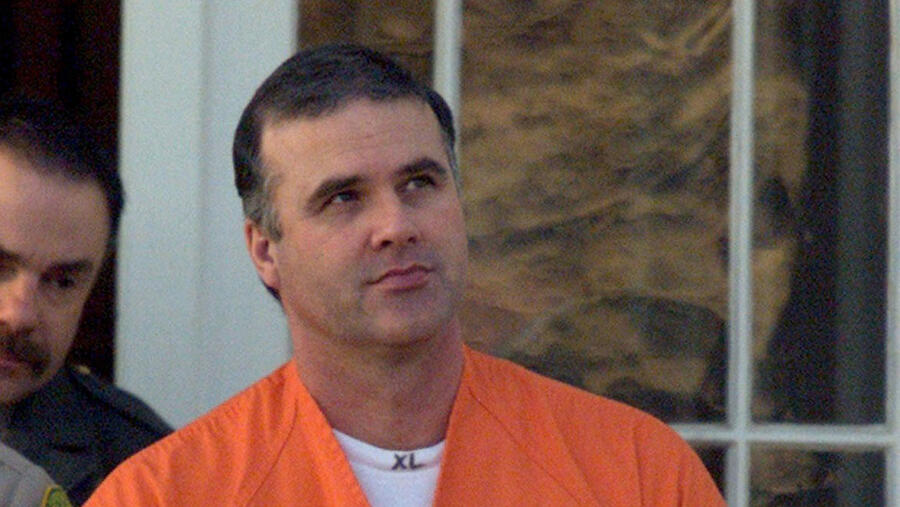Beneath the towering cliffs and tranquil waterfalls of Yosemite National Park, a darker tale hides in its legacy—a memory stained with blood and horror. In 1999, Cary Stayner turned a beloved national park into a hunting ground. Four innocent women lost their lives. And today, over two decades later, Stayner—once a handyman at the Cedar Lodge—is serving a sentence as chilling as the crimes that put him there.
But what does that life look like now?
Let’s step behind the bars and into the solitary world of the Yosemite Killer.
The Yosemite Murders: A Scenic Paradise Turned Sinister
The year was 1999. Yosemite, a crown jewel of natural beauty, became a crime scene. Tourists came to breathe fresh mountain air. But instead, the nation watched in horror as three women—Carole Sund, her daughter Juli Sund, and their exchange student Silvina Pelosso—vanished after checking into the Cedar Lodge.
They had unknowingly entered the lair of Cary Stayner.
Posing as a motel maintenance worker, he gained entry under the guise of fixing a fan. That night, he sexually assaulted, murdered, and mutilated his victims. Weeks later, their remains were discovered in burned-out vehicles and remote woods.
Stayner struck again, killing Joie Ruth Armstrong, a park naturalist. Her decapitated body, found near her cabin, finally led investigators to the killer.
He didn’t resist arrest. In fact, Stayner confessed—on one condition: that he be provided child pornography. The FBI refused, but the confession flowed freely anyway.
The Stayner Family Tragedy: A Life Shaped by Shadows
Cary Stayner’s descent into darkness didn’t come from nowhere. In fact, the Stayner name was already infamous.
In 1972, Cary’s younger brother, Steven Stayner, was kidnapped at age 7 and held by a pedophile for seven years. Steven’s escape in 1980 made national news and was later adapted into a miniseries, I Know My First Name Is Steven.
But fame came at a cost. Cary, the forgotten brother, retreated inward, plagued by obsessive thoughts and untreated childhood trauma—including molestation by an uncle. Psychiatric evaluations revealed deep-seated sexual fantasies about violence, even years before he killed.
The trauma in the Stayner home ran deep—and exploded in one of the most disturbing murder cases in California history.
Cary Stayner Today: A Life in Solitary Confinement
Now in his early 60s, Cary Stayner resides at San Quentin State Prison, one of the most notorious prisons in the U.S. He’s not just serving time—he’s on death row, sentenced to die by lethal injection for the murders of all four women.
But death row in California is a sentence in limbo.
In 2019, Governor Gavin Newsom placed a moratorium on executions, leaving more than 700 inmates in limbo, including Stayner. So while he’s technically sentenced to die, his true punishment is something darker: isolation.
The Prison Cell: A Cage Inside a Fortress
Stayner lives in a cell that’s 48 square feet—barely large enough for a bed and toilet. He spends 23 hours a day in solitary confinement, with one hour of yard time in a narrow cage.
He receives no physical human contact, and no window to the world. His meals are passed through a slot. His voice rarely rises above a whisper—there’s no one to hear it.
This is a world where time doesn’t pass—it stands still. Every day, every week, every year… the same.
No Redemption, No Remorse
Unlike some inmates who seek forgiveness or show remorse, Cary Stayner hasn’t apologized. His interviews and confession tapes are disturbingly calm—void of emotion. He didn’t just kill—he planned his crimes, detailed them, and in many ways, relished the control he had over his victims.
For a man obsessed with power, his punishment is fitting: he has none.
A Fate Worse Than Death?
Critics debate whether the death penalty is justice. But for Cary Stayner, death is postponed—and silence is absolute.
He will likely never be executed, but will never walk free. Trapped in a prison of steel and memory, his fate is eternal isolation—the antithesis of Yosemite’s freedom and grandeur.
In this way, justice isn’t just about a sentence. It’s about stripping away what matters most to the killer. And in Stayner’s case, that was attention, control, and movement.
Remembering the Victims: Their Names Matter Most
While Stayner’s name endures in true crime lore, let us remember the names that matter more:
- Carole Sund, a loving mother
- Juli Sund, just 15 and full of life
- Silvina Pelosso, a bright exchange student from Argentina
- Joie Ruth Armstrong, a passionate park ranger who protected nature’s beauty
They were stolen in terror, but they live on in the fight for justice, advocacy, and victim remembrance.
Final Thoughts: No Peace for the Predator
The man who once hunted in the pristine forests of Yosemite now paces 7-foot steps in a concrete cage. His name, once whispered with fear, now fades into quiet infamy—lost in time, as his victims were once lost in wilderness.
Cary Stayner today lives in silence.
And in that silence, the world speaks the truth he tried to silence.

